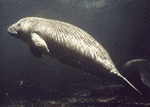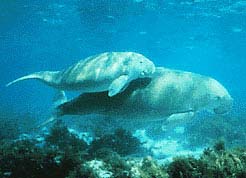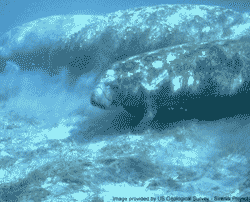I love water and animals in the water, and one of my favourite ones was always the Killer Whale.
These animals are so beautiful, smart, free,
they live together in a family and go for hunting together too.
They wander together all over the ocean.
The Orange Clownfish (Amphiprion percula) is an aquarium fish.
Like other clownfish (also called anemonefish),
it often lives in association with sea anemones.
A. percula is associated specifically with Heteractis magnifica and
Stichodactyla gigantea, and as larva use chemical cues released
from the anemones to identify and locate the appropriate host species
to use them for shelter and protection.
This causes preferential selection when finding their anemone host species
Although popular, maintaining this species in captivity is rather complex.
The Great Barrier Reef Marine Park Authority regulates the number of collection
permits that are issued to aquarium fish dealers who seek this,
and other tropical fish within the Great Barrier Reef Marine Park.
The commensalism between anemonefish and anemones depends on
the presence of the fish drawing other fish to the anemone,
here they are stung by its venomous tentacles.
The anemone helps the fish by giving it protection from predators,
and the fish helps the anemone by feeding it,
increasing oxygenation, and removing waste material from the host.
Various hypotheses exist about the fish's ability to live within the anemone
without being harmed. One study carried out at Marineland of the Pacific
by Dr. Demorest Davenport and Dr.
Kenneth Noris in 1958 revealed that the mucus secreted by the anemone fish
prevented the anemone from discharging its lethal stinging nematocysts.
A second hypothesis is that A. percula has acquired immunity towards
the sea anemone’s toxins, and it has been shown experimentally
to be a combination of the two
Dugongs, manatees, and sea cows
Order : Sirenia
 The order of sirenians contains five species in two
The order of sirenians contains five species in twofamilies (Dugongidae and Trichechidae).
The four living species of the Sirenia are the dugong,
Amazonian manatee, West Indian manatee and African manatee.
One species (Steller's sea cow) is extinct.
The members of the order Sirenia are believed to be relatives of the elephants.
Members of this order live their lives in the water and
feed primarily on vegetation.
They are seal-like animals with big streamlined bodies.
To avoid danger a manatee or dugong can swim up to 16 miles per hour,
but usually they swim much, much slower.
The three species of manatees, and the closely related dugong,
are unique in that they are the only plant-eating marine mammals in modern times.
The most dangerous threat to them is hunting, fishing nets and boat accidents.
Dugongs
 The dugong is the smallest member
The dugong is the smallest memberof the order of the Sirenia.
The name 'Dugong' comes from the
Malay word 'duyong', which means "lady of the sea" or "mermaid". The best chance to encounter the dugongs is in northern Australian waters, where most of their population live. Dugongs don't see that well, instead they use their acute hearing. They feed in the shallow waters on seagrass with the aid of coarse, sensitive bristles, which cover the upper lip of their large and fleshy snout. Remember they are closely related to elephants? Dugong males have small tusks, which they use during the mating season to challenge other dugongs.
Manatees
 Most Amazonian manatees have a distinct white or bright pink patch on their breast. The largest recorded Amazonian was a male with a length of 2.8 m. In the wild it is difficult to measure, but captive adults daily consume from 9 - 15 kg. Amazonian manatees mostly feed during the wet season, when they eat new vegetation in seasonally flooded backwaters. During the dry season (September - March), they congregate in the main river channels or in deep parts of larger lakes, and may fast for weeks or months for lack of available food plants.The largest groups of manatees observed consist of only 4 - 8 animals. Most manatees are either solitary or a female with her young.
Most Amazonian manatees have a distinct white or bright pink patch on their breast. The largest recorded Amazonian was a male with a length of 2.8 m. In the wild it is difficult to measure, but captive adults daily consume from 9 - 15 kg. Amazonian manatees mostly feed during the wet season, when they eat new vegetation in seasonally flooded backwaters. During the dry season (September - March), they congregate in the main river channels or in deep parts of larger lakes, and may fast for weeks or months for lack of available food plants.The largest groups of manatees observed consist of only 4 - 8 animals. Most manatees are either solitary or a female with her young.  The West Indian manatee has a uniform gray or brown color. Some may weigh up to 3000 pounds, but averages lie between 400 and 800 pounds. They can reach lengths of up to 4.5 m! All manatees have a split upper lip. They use both parts of the lip to help put food in their mouths.Because grasses aren't very nutritious they feed on huge quantities. This has also given them a very slow metabolism. Some taxonomies differ two subspecies, the Florida Manatee and the Antillean Manatee.
The West Indian manatee has a uniform gray or brown color. Some may weigh up to 3000 pounds, but averages lie between 400 and 800 pounds. They can reach lengths of up to 4.5 m! All manatees have a split upper lip. They use both parts of the lip to help put food in their mouths.Because grasses aren't very nutritious they feed on huge quantities. This has also given them a very slow metabolism. Some taxonomies differ two subspecies, the Florida Manatee and the Antillean Manatee.The West African manatees are found in coastal marine and estuarine habitats, and in fresh water river systems along the west coast of Africa from the Senegal River south to the Kwanza River in Angola.It looks very similar to the West Indian manatee. They can reach the same size and length as West Indian manatees. The West African manatee is the most threatened of all manatee species.
HERE ARE SOME WALLPAPERS TO ENJOY AND DOWNLOAD

Description
Elephants and Buffalo in the Water at the ArkClick on the photos for a larger image (compressed for quicker download)
 The lodge actually looks like a giant Noah's ark.
The lodge actually looks like a giant Noah's ark.  A herd of African buffalo on the road to the Ark.
A herd of African buffalo on the road to the Ark.  These were part of a larger herd that visited the Ark at night.
These were part of a larger herd that visited the Ark at night.The elephants seem to have a form of communication/greeting
by touching each other with their trunks.
 These animals arrived at dawn to forage and drink water.
These animals arrived at dawn to forage and drink water.  The two gray crowned cranes spent the whole afternoon and
The two gray crowned cranes spent the whole afternoon andthe next morning at the waterhole.
 After leaving the Ark, we stopped at the equator where
After leaving the Ark, we stopped at the equator wherethere are some shops and to watch the locals demonstrate
the change in direction of water flowing out of a bottle.
This elderly man was carrying some dried goat skins.
is English or my Swahili was not good enough for me to determine the purpose of the skins.
He did let me take his photo, for a small fee.
In Search of Elephants - An African Safari
One could not anticipate the awesome adventure that awaited us at the Ark. This next stop located in the heart of Aberdare National Park would prove to be the highlight of the trip. That is if you're searching for elephants. The Ark resembles Noah's Ark comprised of three decks where you can view the wildlife from many vantage points. Elephants, rhino, leopard , Cape Buffalo, and all sorts of birds are attracted to this location because of its natural salt lick and water hole.The Ark is one of two tree-top hotels located in Aberdare National Park. The park extends above 8000 feet. Actually, mountain ranges and peaks soar to almost 14,000 feet creating deep valleys with streams and rivers cascading over spectacular waterfalls. Draping foliage cover the thick forests making the visitors feel as if they are truly in the trees.
Before reaching the Ark, our group checked in at the Aberdare Country Club. Here you are treated to a wonderful lunch before boarding the special jeeps that will take you to your overnight stay in the trees.
On the way up we spotted colobus monkeys high in the trees. Families of these beautiful black and white creatures spied on us from their perches hundreds of feet above us
One group member pointed out a huge gray rock among the bushes. Most of us paid no attention except myself. This huge gray rock lifted its trunk to snap a branch from a nearby tree. Much to our surprise, this rock turned out to be an elephant that shied away from us once it sensed it was being watched.
The jeep stops and now the trek is on foot. You reach the Ark by way of a long gangway that leads you to the main deck. You are on your own until dinner to watch any wildlife that might visit. An extraordinary spot to watch the animals is in a ground-level bunker. Here, you are so close to the animals you can see the hairs on the elephants' skin. Yes, I said elephants - more elephants than I could possibly imagine in one spot.
Females, babies, and male bulls all took a turn at the salt lick and water hole. Many of the males' tusks were dirty from digging in the soil and some were broken from battling other male elephants. The elephants put on quite a show while they trumpeted, rumbled, and pushed away visiting rhinos . One young elephant tested its might against an approaching rhino. He charged at the rhino trying to chase it away. The rhino wasn't very pleased by the young elephant's behavior and charged at the elephant while continuing on to the salt lick. The elephant realized his ineffectiveness and ran to safety behind one of the larger elephants. Sensing danger from the rhino, all the other elephants grouped together surrounding the young troublemaker. As a group, the elephants trumpeted and inched closer to the rhino convincing it to move away from the salt lick. No one messes with an elephant!
THANKS TO VIEW MY BLOG














